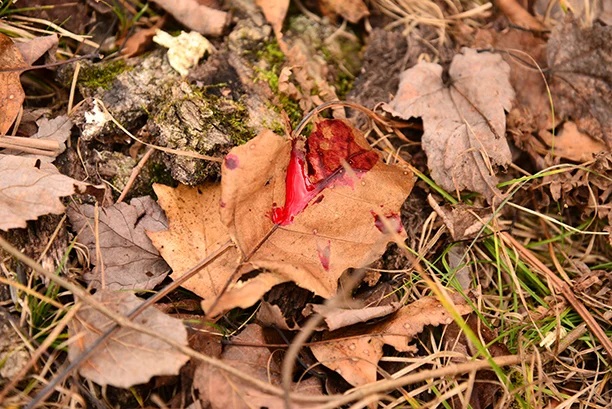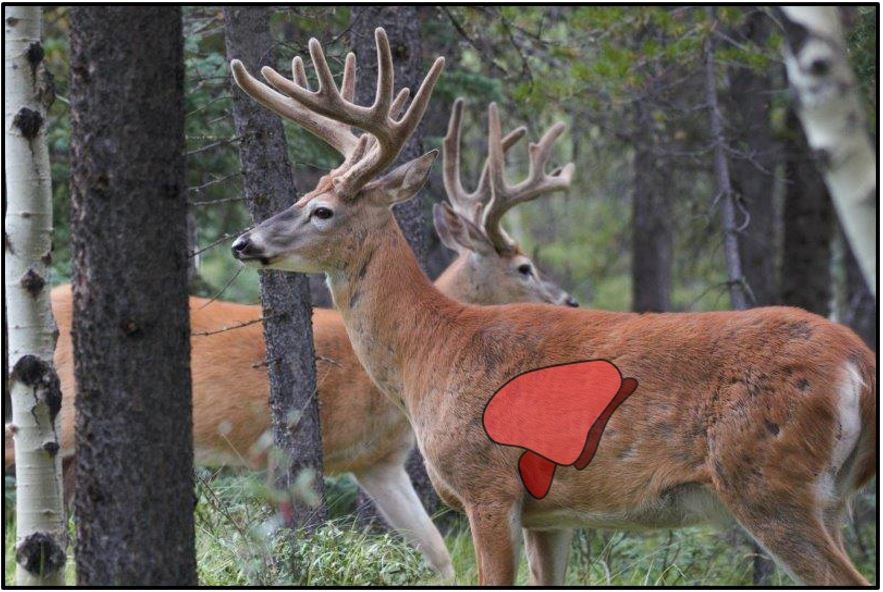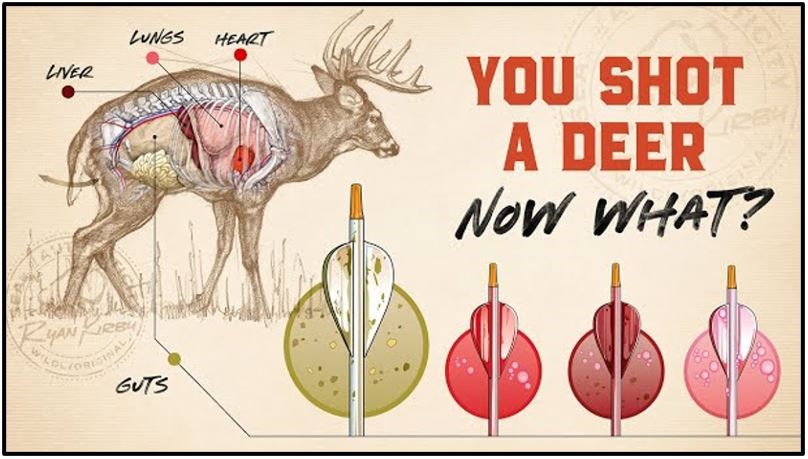Korth Group Outdoor Education, Shot Placement & Tracking Downed Game

Maintaining composure while determining where to place a shot on game and maintaining that focus during and after the shot is an art form in itself. The body is being overrun with adrenaline and the mind slips into a tunnel vision state where it can be challenging to recall your thought process after the event. That is why it is so important to have a firm understanding on an animal’s anatomy so that knowing where you need to place your shots comes as second nature. Not just that, but once the shot is executed you need to remain focused in order to observe any important signs of where that animal was hit, it’s behaviours as it runs off, and where it was last seen before running out of sight. All these points are important for tracking the animal and recovering it. On this edition of Korth Group Outdoor Education, we are going to explore ethical shot placement on game and what to look for after the shot to quickly and efficiently recover that animal.

VITAL ORGAN SHOT PLACEMENT
The location of the vitals on all North American game is very similar with some minor caveats. Bears seem to be one of the only animals in which their vitals are slightly further back towards the middle of their torso, but generally all in the same location right behind the front shoulder.
The lungs and heart, also referred to as the “Pump House” or the “Boiler Room”, should be your primary target. Sending a shot through this area provides your best chances of a quick clean kill. The best shot angles to access this vital area is a broadside or quartering away shot. Shots on the animal when they are quartering towards you can still be effective however, you need to be cognisant of the shoulder blade and front leg bones, as they could impede or deflect your shot.
Shots placed further back from the “Pump House” gets you into the stomach and intestines, commonly referred to as a “Gut Shot”, which doesn’t present a good situation. This results in a slow death of the animal which could restrict your chances of recovery. If you are lucky enough to recover the animal, a gut shot can still affect the quality of your meat as any meat around the stomach cavity is exposed to that animal’s waste.
Understanding the location of the vitals at any angle is very important for a quick and ethical kill. Sub par shot placement could result in a wounded animal or an animal that you are unable to recover.
BONE AND SHOULDER CONSIDERATIONS
We touched on this a bit earlier when referencing “quartering to” shots, but big, large bones like the shoulder blade can act as a large internal shield and can negatively affect your shot from adequately entering the vitals. Bigger bodied animals like moose, elk, and bears can have thick and heavy bones that need to be navigated properly. That is why it is recommended to use monolithic bullets on these types of animals, like Hornady’s CX bullet, as they retain their weight and have optimal penetration to drive through heavy media like dense bones and massed up stomach content. It is important to have the right tool for the job, but it is even more important to choose the path of least resistance when you have options. A broadside or quartering away shot will provide you with that advantage where no large bones or other obstacles can get in the way.
TYPES OF BLOOD TRAILS AND WHAT THEY INDICATE
Once the shot is executed, the blood trail will provide lots of helpful information as to where the projectile hit the animal. The colour and consistency of the blood will present evidence of whether it was shot to the heart, lungs, liver, guts, etc.. Here is a breakdown of some of the characteristics blood will have given the location of the shot.

Source: Kirby, Ryan. “You Shot a Deer! How Long Should You Wait?”, uploaded by Ryan Kirby Art, 20 July 2023, https://www.youtube.com/watch?app=desktop&v=J1Auz7ixeW4
HEART SHOT
- Blood Colour: Bright red, due to oxygenated arterial blood.
- Blood Trail: Heavy and steady, often gushing. The heart pumps blood with high pressure, leading to a continuous, copious trail.
- Other Signs: The animal may run a short distance (often within sight) before collapsing quickly due to the rapid blood loss.
LUNG SHOT
- Blood Color: Light, frothy pink due to blood mixing with air from the lungs.
- Blood Trail: The trail might not be as heavy as a heart shot but will still be significant. Look for bubbles in the blood, which indicate a lung hit.
- Other Signs: The animal may run further than with a heart shot, but typically collapses within 100-200 yards. Breathing sounds (wheezing or coughing) may also be heard before the animal goes down.
LIVER SHOT
- Blood Color: Dark red, almost brownish. Liver blood is venous, meaning it lacks oxygen, which gives it a darker color.
- Blood Trail: The trail may start light and increase as the animal moves. It will likely not be as heavy as a heart or lung shot.
- Other Signs: The animal may travel a moderate distance (100–300 yards) but will usually bed down and die within a few hours. Be patient and allow time before tracking.
GUT SHOT
- Blood Color: The blood may appear sparse or mixed with stomach contents. It might also be greenish or brown due to stomach bile and partially digested food.
- Blood Trail: The trail is typically light or intermittent, with a foul odor and bits of tissue or stomach contents. Blood may be smeared rather than in drops.
Other Signs: The animal will likely run a considerable distance and take a longer time to expire (often several hours or even overnight). Gut-shot animals tend to bed down after running and may need to be left undisturbed to expire.
TRACKING TECHNIQUES AFTER THE SHOT
It is very easy to get caught up in the excitement once you see the shot impact, however it is extremely important to be vigilant of where the animal was hit and where it was last seen. This allows you a starting point for tracking the animal and recovering it. Use landmarks, like trees, rocks, or other easy reference points that were close to the animal during this process to begin. Longer shots, made with rifles, will provide a bit more of a challenge as there is a greater distance between you and where the animal was shot. Helpful equipment like tracking hunt apps and new rangefinders, like the Leupold RX-5000, will allow you to drop a pin on your cell phone to better navigate to that location to take the guess work out.
Once you reach the location where the animal was struck, start to look for your blood trail. Heart shots and pass-through shots will present the highest volume of blood to follow. If you are not presented with a large volume of blood to follow, search for any clues that will lead you in the animal’s direction like game trails, broken foliage, or tuffs of hair on branches or fences. A common behavior characteristic that wounded animals will do is source out water to quench their thirst and cool off their bodies due to blood loss. If you blood trail ends, finding a body of water may lead you in the right direction.
Ethical shot placement and keen post-shot observation are crucial for ensuring a quick, humane kill and successful recovery of your game. Understanding an animal’s anatomy and the factors that affect shot performance, such as bone structure and shot angles, gives you the best chance for success. Once a shot is taken, staying vigilant and noting the blood trail, animal behavior, and surrounding landmarks will help you efficiently track and recover your game. Patience, preparation, and attention to detail in these moments can make the difference between a successful hunt and a lost animal.
